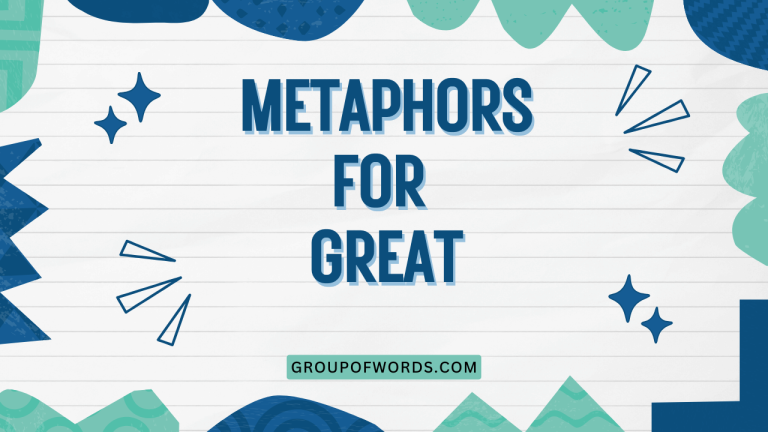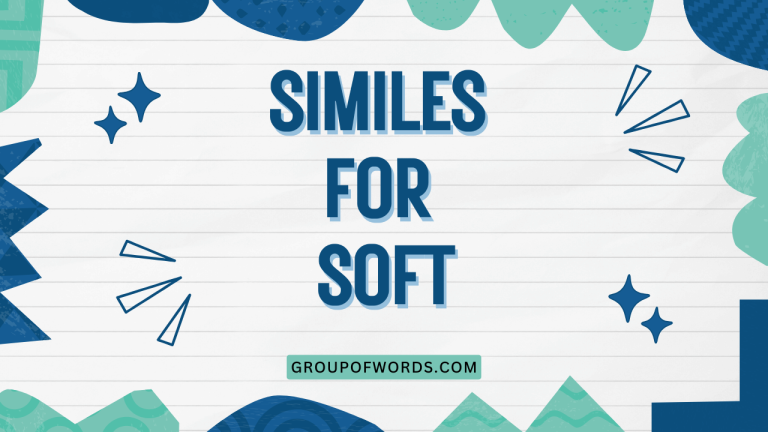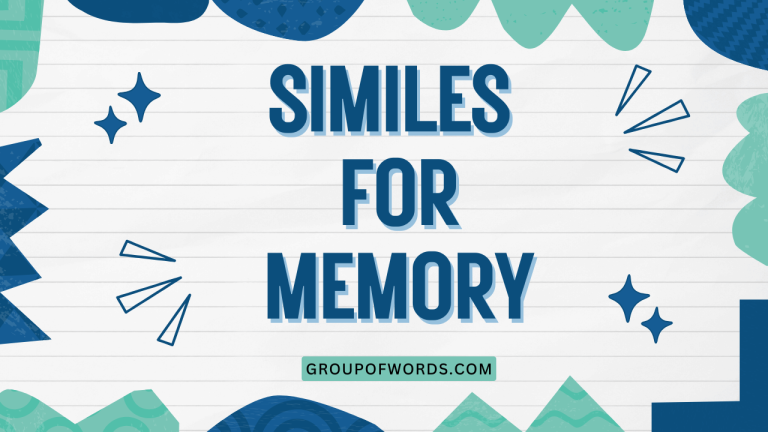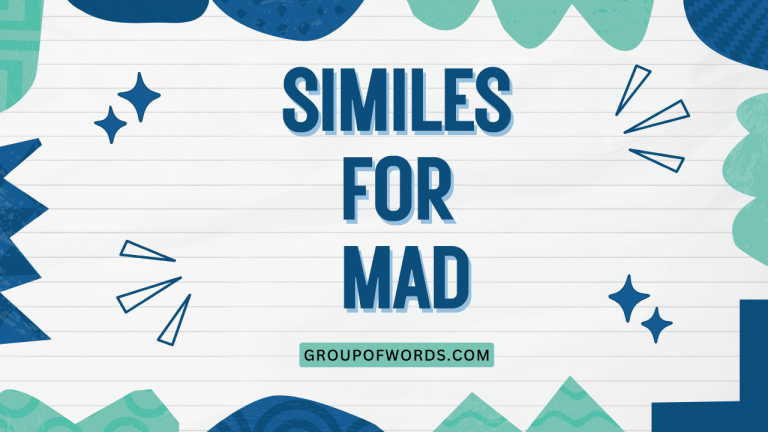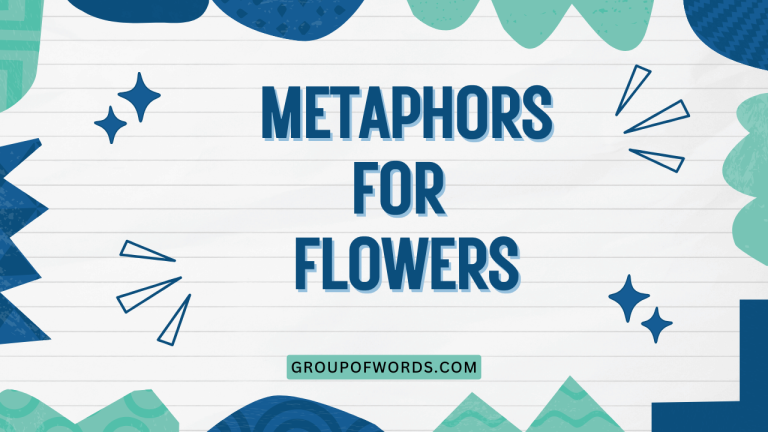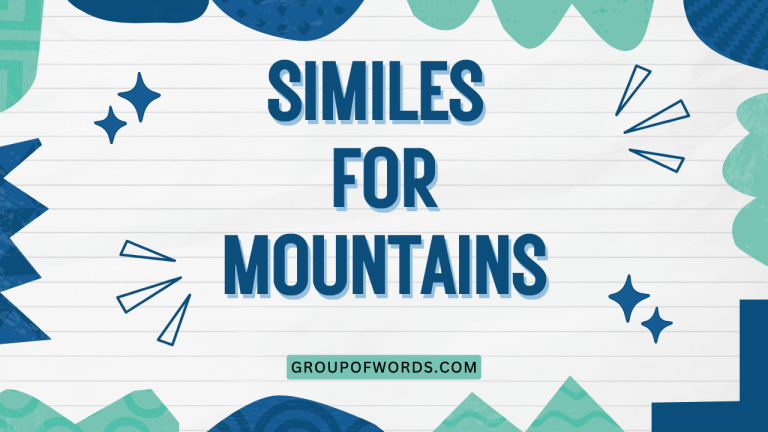Marriage Similes: A Comprehensive Guide to Figurative Language
Marriage, a profound and multifaceted institution, often defies simple description. To capture its complexities, joys, and challenges, writers and speakers frequently turn to similes.
Understanding similes, particularly those related to marriage, enhances our appreciation of figurative language and improves our ability to express nuanced meanings. This article provides a comprehensive guide to marriage similes, exploring their structure, types, usage, and common pitfalls.
Whether you’re a student of English, a writer seeking vivid imagery, or simply curious about language, this guide will equip you with the knowledge and skills to master this expressive tool.
This guide is designed to benefit English language learners, writers, public speakers, and anyone interested in understanding and using figurative language effectively. By exploring the nuances of similes in the context of marriage, readers will gain a deeper understanding of how language can be used to create vivid imagery and convey complex emotions.
Table of Contents
- Introduction
- Definition of Simile
- Structural Breakdown of Similes
- Types of Marriage Similes
- Examples of Marriage Similes
- Usage Rules for Marriage Similes
- Common Mistakes in Using Marriage Similes
- Practice Exercises
- Advanced Topics in Similes
- Frequently Asked Questions
- Conclusion
Definition of Simile
A simile is a figure of speech that directly compares two different things using the words “like” or “as.” It’s a powerful tool for creating vivid imagery, conveying complex emotions, and making abstract concepts more understandable. Unlike a metaphor, which states that one thing *is* another, a simile acknowledges the distinction between the two things being compared while highlighting their similarities.
The primary function of a simile is to enhance understanding and create a more engaging reading or listening experience. By drawing parallels between familiar and unfamiliar concepts, similes can make abstract ideas more concrete and relatable.
In the context of marriage, similes can be used to describe the relationship’s dynamics, the emotions of the partners, or the challenges they face.
Similes are commonly found in literature, poetry, everyday speech, and even scientific writing. They add color and depth to language, making it more expressive and memorable.
Understanding how similes work is essential for both interpreting and creating effective communication.
Structural Breakdown of Similes
A simile typically consists of three key components: the tenor, the vehicle, and the ground. The tenor is the subject being described (e.g., marriage). The vehicle is the object or concept to which the tenor is compared (e.g., a garden). The ground is the shared characteristic or similarity between the tenor and the vehicle (e.g., the need for care and cultivation). The words “like” or “as” act as the bridge connecting the tenor and the vehicle.
For example, in the simile “Marriage is like a garden,” the tenor is “marriage,” the vehicle is “a garden,” and the ground is the shared characteristic of requiring care, attention, and nurturing to thrive. The word “like” explicitly signals the comparison.
The effectiveness of a simile depends on the clarity and relevance of the ground. A strong simile highlights a meaningful connection between the tenor and the vehicle, making the comparison insightful and memorable.
A weak simile, on the other hand, may be confusing or ineffective if the connection is tenuous or obscure.
Types of Marriage Similes
Marriage similes can be categorized based on the aspect of marriage they emphasize. Here are some common types:
Similes of Strength and Stability
These similes highlight the resilience and enduring nature of a marriage. They often compare marriage to strong, stable objects or forces.
Similes of Harmony and Balance
These similes emphasize the importance of cooperation, understanding, and equilibrium in a successful marriage. They often use musical or natural metaphors.
Similes of Challenge and Conflict
These similes acknowledge the difficulties and struggles that couples may face in their marriage. They often use metaphors of storms, battles, or obstacles.
Similes of Growth and Evolution
These similes highlight the transformative power of marriage and the personal development that can occur within the relationship. They often use metaphors of plants, seasons, or journeys.
Similes of Comfort and Security
These similes emphasize the sense of safety, warmth, and belonging that a marriage can provide. They often use metaphors of home, shelter, or companionship.
Examples of Marriage Similes
The following tables provide a range of examples, categorized by the overall sentiment they convey about marriage. These examples demonstrate the versatility and power of similes in expressing complex ideas about relationships.
Positive Marriage Similes
These similes portray marriage in a favorable light, emphasizing its joys, strengths, and benefits.
The table below includes examples of positive similes for marriage, demonstrating the variety of ways that figurative language can be used to express the positive aspects of a marital relationship.
| Simile | Explanation |
|---|---|
| Marriage is like a well-tended garden. | It requires constant care and attention to flourish. |
| Marriage is like a fine wine. | It gets better with age. |
| Marriage is like a sturdy ship. | It can weather any storm. |
| Marriage is like a warm fire on a cold night. | It provides comfort and security. |
| Marriage is like a beautiful song. | It is harmonious and uplifting. |
| Marriage is like a shared dream. | It is a vision that two people create together. |
| Marriage is like a strong foundation. | It provides stability and support. |
| Marriage is like a dance. | It requires coordination and cooperation. |
| Marriage is like a peaceful harbor. | It offers refuge from the storms of life. |
| Marriage is like a lifelong adventure. | It is full of excitement and discovery. |
| Marriage is like a comfortable old shoe. | It feels familiar and comforting. |
| Marriage is like a shared canvas. | Two people create a beautiful picture together. |
| Marriage is like a symphony. | Different instruments (personalities) blend harmoniously. |
| Marriage is like a lighthouse. | Guiding and protecting through darkness. |
| Marriage is like a sturdy bridge. | Connecting two lives and supporting them. |
| Marriage is like a blooming flower. | It grows more beautiful over time with care. |
| Marriage is like a treasure chest. | Full of precious moments and memories. |
| Marriage is like a warm blanket. | Providing comfort and security. |
| Marriage is like a compass. | Guiding you in the right direction. |
| Marriage is like a deep ocean. | Full of mystery and endless possibilities. |
| Marriage is like a perfect puzzle. | Two pieces fitting together seamlessly. |
| Marriage is like a shared journal. | Writing your life story together. |
| Marriage is like a strong tree. | Rooted deeply and weathering all storms. |
Negative Marriage Similes
These similes depict the challenging aspects of marriage, such as conflict, stagnation, or unhappiness.
The table below presents examples of negative similes for marriage, highlighting the difficulties and potential pitfalls that can occur in a marital relationship. These similes can be used to express dissatisfaction, conflict, or a sense of disillusionment.
| Simile | Explanation |
|---|---|
| Marriage is like a battlefield. | It is full of constant conflict and arguments. |
| Marriage is like a rusty cage. | It feels confining and restrictive. |
| Marriage is like a leaky faucet. | It is a source of constant irritation. |
| Marriage is like a heavy chain. | It feels burdensome and oppressive. |
| Marriage is like a broken record. | Repeating the same arguments over and over. |
| Marriage is like a stagnant pond. | It lacks excitement and growth. |
| Marriage is like a thorny bush. | It is full of pain and difficulty. |
| Marriage is like a dark cloud. | It casts a shadow over everything. |
| Marriage is like a slow poison. | It gradually destroys happiness. |
| Marriage is like a tightrope walk. | It requires constant effort and balance. |
| Marriage is like a prison. | Feeling trapped and without freedom. |
| Marriage is like a constant storm. | Never-ending conflict and turmoil. |
| Marriage is like a silent movie. | Lack of communication and connection. |
| Marriage is like a desert. | Barren and lacking affection. |
| Marriage is like a ticking time bomb. | Constant tension and impending explosion. |
| Marriage is like a broken mirror. | Reflecting a distorted image of happiness. |
| Marriage is like a tangled web. | Complicated and difficult to escape. |
| Marriage is like a haunted house. | Filled with unresolved issues and ghosts of the past. |
| Marriage is like a sinking ship. | Inevitably heading towards disaster. |
| Marriage is like a long, dark tunnel. | Endless and without hope. |
| Marriage is like a house of cards. | Fragile and easily collapsing. |
| Marriage is like a never-ending winter. | Cold and devoid of warmth. |
| Marriage is like a barren field. | Unproductive and without growth. |
Neutral Marriage Similes
These similes offer a more objective or balanced perspective on marriage, acknowledging both its positive and negative aspects.
The table below provides examples of neutral similes for marriage, which offer a balanced or objective perspective on the marital relationship. These similes can be used to describe marriage in a realistic and nuanced way, acknowledging both its joys and challenges.
| Simile | Explanation |
|---|---|
| Marriage is like a roller coaster. | It has its ups and downs. |
| Marriage is like a long road trip. | There are smooth stretches and bumpy patches. |
| Marriage is like a business partnership. | It requires negotiation and compromise. |
| Marriage is like a team sport. | It requires teamwork and cooperation. |
| Marriage is like a seesaw. | It requires balance and give-and-take. |
| Marriage is like a garden that needs tending. | It requires consistent effort to thrive. |
| Marriage is like a dance that evolves over time. | It changes and adapts as the partners grow. |
| Marriage is like a conversation that never ends. | It requires constant communication and understanding. |
| Marriage is like a tapestry woven with different threads. | It is made up of diverse experiences and perspectives. |
| Marriage is like a mirror reflecting both strengths and weaknesses. | It reveals aspects of oneself that may not be immediately apparent. |
| Marriage is like a shared bank account. | Jointly managing resources and responsibilities. |
| Marriage is like a recipe. | Requiring the right ingredients and careful preparation. |
| Marriage is like climbing a mountain. | Challenging but rewarding with a shared view from the top. |
| Marriage is like building a house. | Brick by brick, creating a lasting structure. |
| Marriage is like sailing a ship. | Navigating through calm and stormy seas together. |
| Marriage is like a complex ecosystem. | Interdependent and requiring balance. |
| Marriage is like a long book. | Filled with chapters of joy, sorrow, and everything in between. |
| Marriage is like a well-worn path. | Familiar and comfortable, but requiring continued attention. |
| Marriage is like a shared project. | Working together towards common goals. |
| Marriage is like a continuous learning experience. | Constantly evolving and adapting. |
| Marriage is like a partnership in business. | Sharing responsibilities and working towards success. |
| Marriage is like a long hike. | Enduring challenges and enjoying the scenery together. |
| Marriage is like a complex machine. | Requiring regular maintenance and fine-tuning. |
Usage Rules for Marriage Similes
While similes can be a powerful tool, it’s important to use them effectively and appropriately. Here are some key rules to keep in mind:
Clarity and Relevance
The simile should be clear and easy to understand. The connection between the tenor and the vehicle should be obvious and relevant.
Avoid using obscure or far-fetched comparisons that may confuse the reader.
Appropriateness of Tone
The tone of the simile should be appropriate for the context. Avoid using flippant or insensitive similes when discussing serious or sensitive topics.
Consider the audience and the overall message you want to convey.
Cultural Sensitivity
Be mindful of cultural differences and avoid using similes that may be offensive or inappropriate in certain cultures. What may be a common metaphor in one culture could be misunderstood or considered disrespectful in another.
Common Mistakes in Using Marriage Similes
One common mistake is using clichés. Overused similes like “Marriage is like a walk in the park” have lost their impact and can make your writing sound unoriginal.
Strive for fresh and creative comparisons.
Another mistake is creating mixed metaphors. For example, “Marriage is like a garden that needs constant fuel to keep it afloat” combines two unrelated images (garden and ship), resulting in a confusing and nonsensical simile.
Ensure that the tenor and vehicle are logically connected.
Finally, avoid using similes that are overly negative or cynical, especially when discussing marriage in a celebratory or supportive context. Choose similes that are balanced and nuanced, reflecting the complexities of the relationship.
Here’s a table illustrating common mistakes with correct and incorrect examples:
| Incorrect Simile | Correct Simile | Explanation |
|---|---|---|
| Marriage is like a walk in the park. | Marriage is like a challenging hike up a mountain. | Avoid clichés; use fresh comparisons. |
| Marriage is like a garden that needs constant fuel to keep it afloat. | Marriage is like a garden that needs constant watering and care. | Avoid mixed metaphors; maintain logical consistency. |
| Marriage is like a life sentence. | Marriage is like a long journey with both sunny and stormy weather. | Avoid overly negative comparisons; aim for balance and nuance. |
| Marriage is as easy as falling off a log. | Marriage is as rewarding as reaching a long-sought goal. | Avoid overused expressions; choose more meaningful comparisons. |
| Marriage is like a wild goose chase that lands you in the wrong place. | Marriage is like a collaborative project that requires constant communication. | Ensure the comparison is relevant and insightful, not misleading. |
| Their marriage was like a volcano erupting with sunshine. | Their marriage was like a volcano erupting with pent-up emotions. | Maintain consistency in the imagery; avoid contradictory elements. |
Practice Exercises
Test your understanding of marriage similes with these exercises. Choose the best simile to complete each sentence, or create your own.
Below is a table containing practice exercises to help you solidify your understanding of marriage similes. Each question requires you to either choose the best simile to complete a sentence or create your own simile based on the given context.
| Question | Answer |
|---|---|
| 1. A successful marriage is like _____. | A well-tuned orchestra, where each instrument plays its part in harmony. |
| 2. A struggling marriage can feel like _____. | A car stuck in the mud, spinning its wheels but going nowhere. |
| 3. Marriage should be _____, not just a legal contract. | A deep and meaningful connection between two souls. |
| 4. Complete the simile: “Their marriage was as strong as _____.” | An oak tree, weathering every storm with unwavering resilience. |
| 5. A good marriage is like _____, providing comfort and security. | A warm blanket on a cold winter night. |
| 6. A marriage without communication is like _____. | A garden without water, slowly withering away. |
| 7. A healthy marriage is like _____, constantly growing and evolving. | A tree putting down deeper roots over time. |
| 8. Complete the simile: “Their love was like _____, burning brightly through the years.” | A steady flame, providing warmth and light. |
| 9. A marriage built on trust is like _____. | A sturdy bridge, connecting two hearts across any distance. |
| 10. A marriage filled with resentment is like _____. | A festering wound, never allowed to heal. |
| 11. Marriage is like _____, requiring patience and perseverance. | Climbing a steep hill. |
| 12. A joyful marriage is like _____, full of laughter and happiness. | A sunny day. |
Advanced Topics in Similes
For advanced learners, exploring more complex aspects of similes can further enhance their understanding and usage of figurative language.
Extended Similes
An extended simile is a simile that is developed over several lines or sentences. It provides a more detailed and elaborate comparison between the tenor and the vehicle, creating a richer and more vivid image.
For example: “Marriage is like a long and winding road: sometimes smooth and easy, sometimes rough and challenging, but always leading to new and unexpected destinations. It requires patience, perseverance, and a willingness to navigate the curves together.”
Implied Similes
An implied simile is a simile that does not explicitly use the words “like” or “as.” Instead, it suggests a comparison through subtle hints and associations. This type of simile requires the reader to infer the connection between the tenor and the vehicle.
For example: “Their marriage weathered every storm.” This implies that marriage is like a ship that can withstand difficult conditions.
Similes vs. Metaphors
While both similes and metaphors are figures of speech that compare two different things, they differ in their directness. A simile uses “like” or “as” to explicitly state the comparison, while a metaphor implies the comparison without using these words.
Understanding the distinction between similes and metaphors is crucial for effective communication.
Here’s a table comparing similes and metaphors:
| Feature | Simile | Metaphor |
|---|---|---|
| Comparison | Explicit (using “like” or “as”) | Implicit (without “like” or “as”) |
| Example | Marriage is like a garden. | Marriage is a garden. |
| Directness | More direct | Less direct |
| Function | Suggests similarity | Asserts identity |
Frequently Asked Questions
Here are some common questions about similes and their use in the context of marriage:
Below are frequently asked questions about marriage similes, providing detailed answers to help clarify any confusion and enhance understanding.
- What is the difference between a simile and a metaphor?
A simile uses “like” or “as” to make a comparison, while a metaphor directly equates two unlike things without using these words. For example, “Marriage is like a garden” (simile) versus “Marriage is a garden” (metaphor).
- Why are similes used in writing and speech?
Similes add vividness, clarity, and emotional impact to language. They help readers or listeners understand complex concepts by relating them to familiar ones, making the message more engaging and memorable.
- How can I create effective marriage similes?
To create effective similes, identify the key characteristics of marriage you want to highlight, then find an object or concept with similar qualities. Ensure the comparison is clear, relevant, and not overused.
- What are some common pitfalls to avoid when using similes?
Avoid using clichés, mixed metaphors, and culturally insensitive comparisons. Ensure the simile is appropriate for the context and audience, and that it adds value to your message.
- Can a simile be too obvious?
Yes, a simile can be too obvious if it states the comparison in a simplistic or unoriginal way. Strive for creativity and insight in your comparisons to make them more impactful.
- How do I identify the tenor, vehicle, and ground in a simile?
The tenor is the subject being described (e.g., marriage), the vehicle is the object or concept it’s being compared to (e.g., a garden), and the ground is the shared characteristic between them (e.g., the need for care and nurturing).
- Are similes more effective than metaphors?
The effectiveness of a simile versus a metaphor depends on the context and the writer’s or speaker’s intent. Similes are often clearer and more straightforward, while metaphors can be more powerful and evocative.
- How can similes be used to express negative aspects of marriage?
Similes can express negative aspects of marriage by comparing it to unpleasant or undesirable things, such as a battlefield, a prison, or a stagnant pond. These comparisons can convey feelings of conflict, confinement, or stagnation.
- What role does cultural context play in understanding similes?
Cultural context is crucial because similes often draw on shared cultural knowledge and experiences. A simile that is meaningful in one culture may not be understood or appreciated in another.
- How can I improve my ability to use similes effectively?
Read widely, pay attention to how similes are used in literature and everyday speech, and practice creating your own similes. Experiment with different comparisons and ask for feedback on their clarity and impact.
Conclusion
Mastering the art of using similes, particularly in the context of marriage, involves understanding their structure, types, and usage rules. By avoiding common mistakes and practicing regularly, you can enhance your ability to express complex ideas and emotions in a vivid and engaging way.
Similes are a valuable tool for writers, speakers, and anyone seeking to communicate more effectively. Remember to choose comparisons that are clear, relevant, and appropriate for the context and audience.
By understanding the nuances of similes, especially within the context of marriage, you can significantly enhance your communication skills and deepen your appreciation for the richness and versatility of the English language. Continue to explore and experiment with similes to unlock their full potential and add depth and color to your writing and speech.

